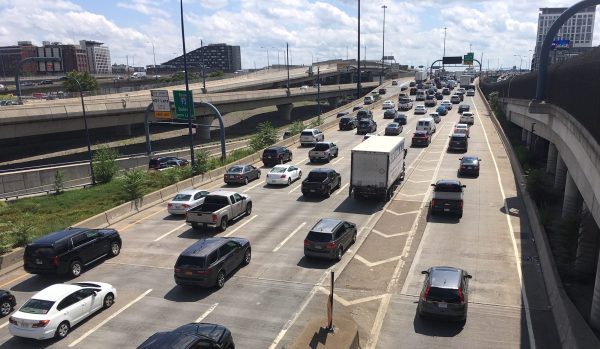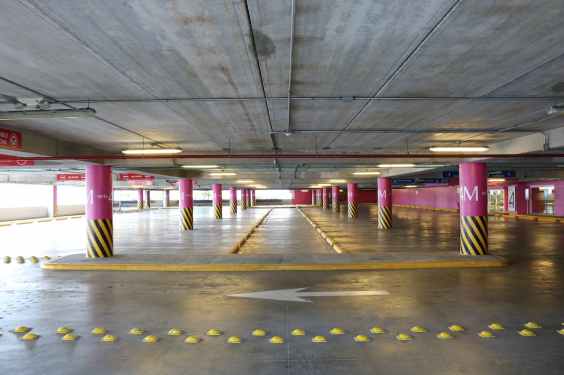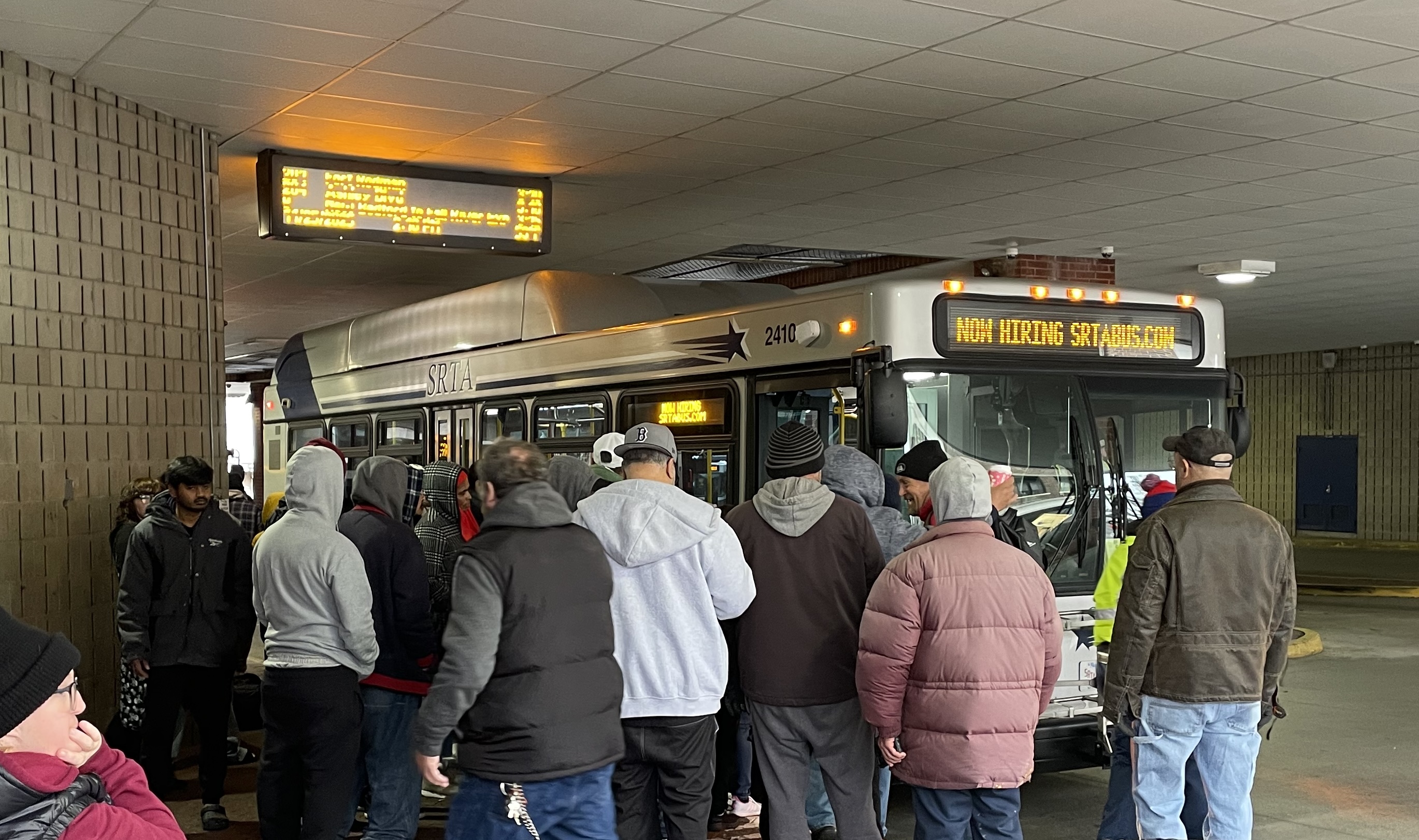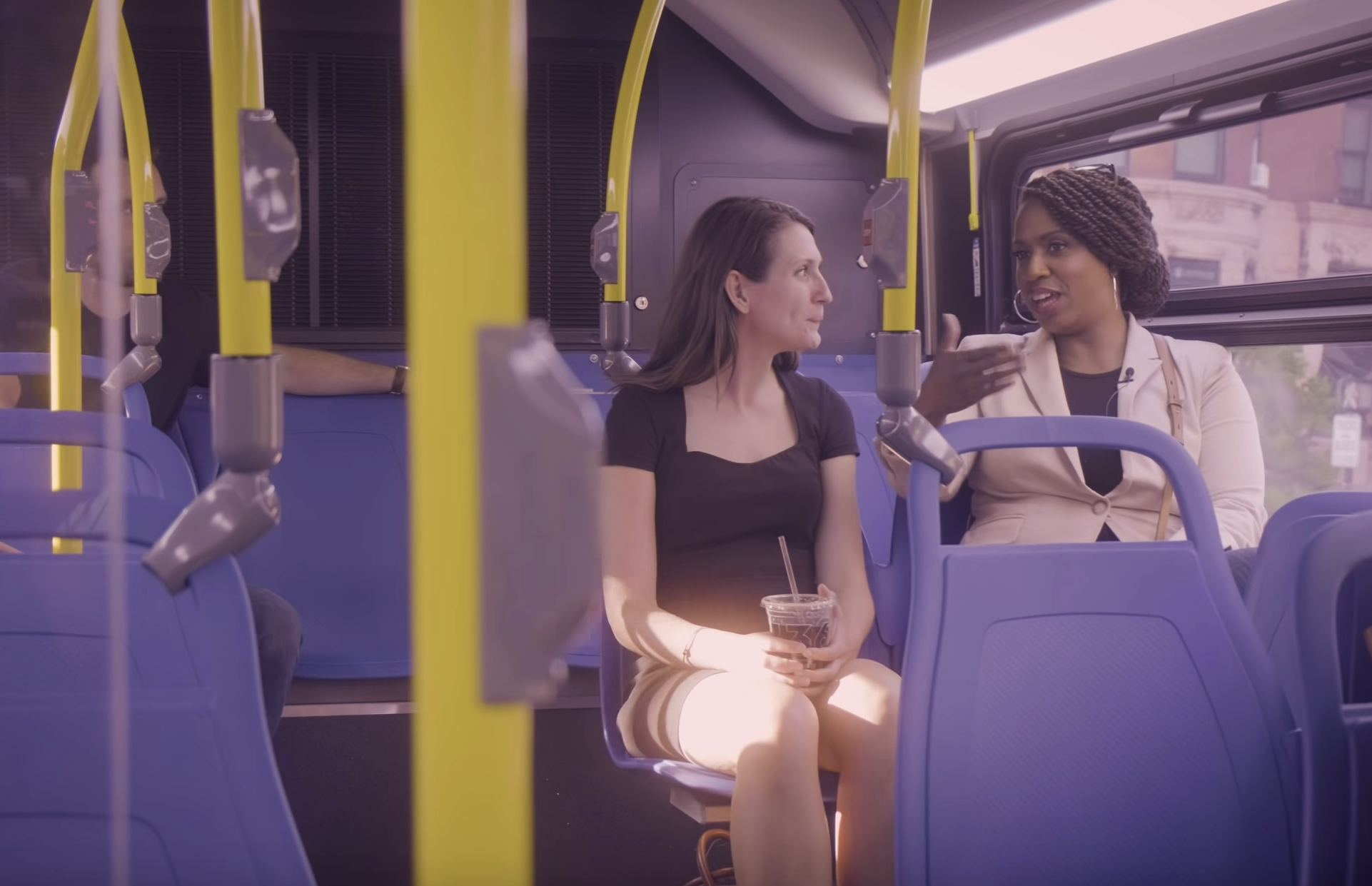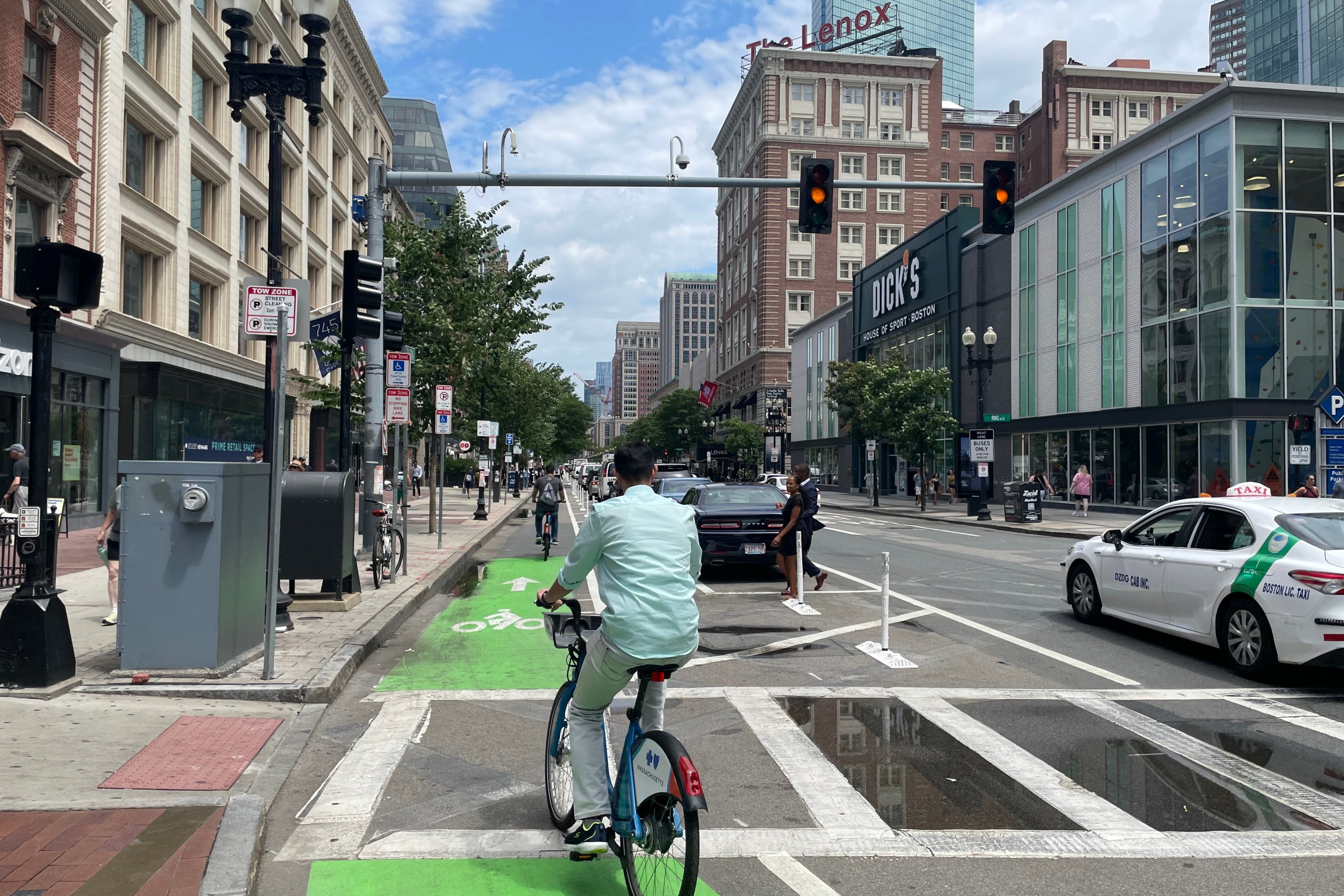While some of her political challengers are staking their campaigns on 20th-century visions of bringing more cars into Boston, Mayor Wu’s Chief of Streets joined Boston’s business leaders last Tuesday for a conversation about bringing Boston’s transportation systems into the future.
As part of the Boston Chamber of Commerce’s Transportation First series, Jim Rooney, the Chamber’s President & CEO, invited Boston Chief of Streets Jascha Franklin-Hodge and Kate Dineen, CEO at A Better City, for a discussion of transportation challenges and solutions.

In introductory remarks, Rooney spoke of the fundamental need to lead with transportation policy while the region addresses other major policy challenges, like housing and climate change.
“If we do deal with our transportation issues in a bold and meaningful way, we're making progress on all of those issues as well,” Rooney explained.
Too many cars
Franklin-Hodge echoed those comments, naming how “transportation intersects with so many of the challenges we face as a region,” from climate change, to housing, to economic opportunity.
“Transportation is essential to the future of the city, and it's essential to our ability to solve some of these big challenges.”
Franklin-Hodge told the audience that the number of registered passenger vehicles in the City of Boston had increased by 19,000 in only the past 5 years, which translates to a 7 percent increase in the number of vehicles.
The “over-capacity” regional highway system, he observed, frequently backs up city streets from downtown to Back Bay and causes major gridlock on a good day.
"Fundamentally, this is a geometry problem. Because the roads are not getting any bigger," he said.
So, if the city hopes to grow by building more housing, bringing in more residents, creating more jobs, “we run the risk of making all of these transportation challenges even worse,” and choking off the regional economy in traffic.
What Boston can do about it
The city’s strategy to address these challenges is focused on two main aspects: getting the most out of the roads that we have, and giving people more attractive options to get around.
Franklin-Hodge touted the city’s partnership with Google on Project Greenlight, which uses experimental AI technology and data from Google Maps users to monitor cars traveling around the city and help optimize traffic signals.
The data helps understand how traffic signals operate, and then identifies and recommends small changes to potentially enhance the road network. Since starting its use, the city has retimed 71 intersections, or almost 10 percent of the intersections in the city, resulting in an average reduction in delay of 13 percent.
Next week, the city will be turning on more adaptive traffic signals in the Seaport, monitoring and adapting timing in real time based on traffic conditions on the ground.
The Wu administration is also honing in on reining in food delivery app platforms, which have, by some estimates, put millions of additional trips onto Boston’s streets.
The city recently passed a new regulatory ordinance for food delivery providers like DoorDash and Uber that will require those companies meet a basic insurance requirements and also share data about their operations with the city. Franklin-Hodge says that this will help the city plan for and mitigate congestion problems from food deliveries.
And finally, in parking enforcement, Franklin-Hodge boasted that the city has bolstered its parking enforcement workforce, from fewer than 80 parking enforcement officers citywide when Mayor Wu took office in 2021, to roughly 125 personnel presently.
The city is also planning to pilot Sunday enforcement, as they have seen that there is a need for parking enforcement seven days a week, specifically in Downtown.
Making better choices
“Our philosophy is not that the city should be telling you how you should get around… that you shouldn't drive, or you should ride a bike, or you should do this or do that,” said Franklin-Hodge. But we know that the choices we make affect the choices that everyone else makes, and the way that we set up our road system, the things we choose to invest in, the things that feel safe or not affects the behavior of people, and how they choose to travel within their own circumstances.”
Franklin-Hodge gave props to MBTA General Manager Eng, Secretary Tibbutts-Nutt, and the Healy administration for working to rectify the decades of disinvestment in public transit, highlighting the Track Improvement Program, Bus Network Redesign, and fare free pilot on the, 23, 28, and 29 buses.
That work is paying off already. At the March board meeting, the T announced that ridership is up 24 percent from last year, and that fare revenue is already exceeding this fiscal year’s projections.
To support the MBTA, the city has dedicated staff, time, and planning to facilitate shuttle bus travel throughout the city (routing, staging, managing traffic, bus lanes, shuttle stops, curb regulations, ADA compliance, traffic signals, etc.) during T closures, and has engaged in a number of projects to implement priority space or priority signal timing to the bus so that it can keep moving, facilitating the success of the Bus Network Redesign.
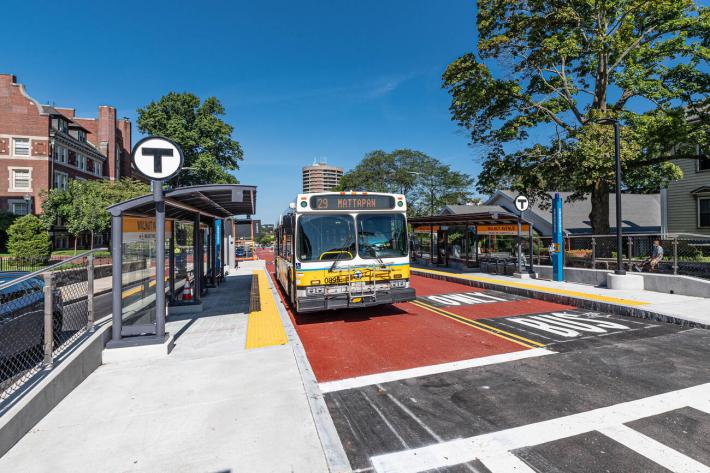
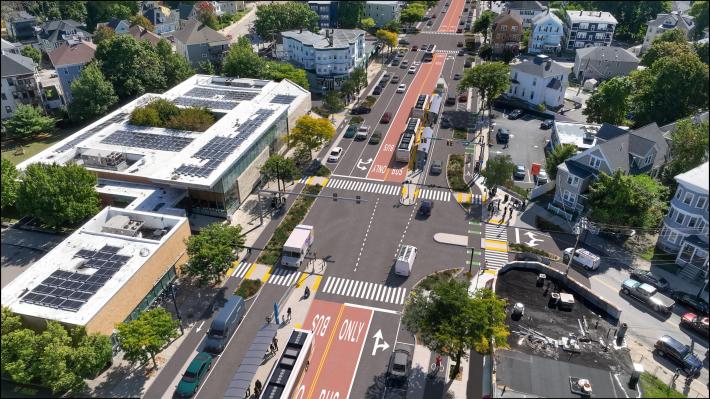
Franklin-Hodge also reminded the audience that safety concerns are a major factor preventing Boston residents from leaving their cars at home. While Boston has been seeing a decline in deaths and injuries on the roads, violent crashes are still distressingly common here.
In fact, researchers at MIT report that every four days, Boston EMS is responding to an injury crash involving a child.
Sharing results from a retrospective analysis of bike projects developed towards the end of the Walsh administration. The report found infrastructure changes made a measurable impact on street safety, namely:
- 68 percent fewer pedestrian injury crashes
- 57 percent fewer bicyclist crashes
- 29 percent fewer motor vehicle injury crashes
The Mayor’s popular speed hump program has ushered in safer streets across Boston over the last three years, with over 1,200 speed humps installed across 73 miles of residential streets. They can be built quickly, cheaply, they don't take away parking, and they address people taking cut-through traffic suggestions from Google Maps & Waze and speeding through residential areas. For example, in Jamaica Plain, a before and after study showed that the percentage of speeding drivers reduced from 31 to 3 percent, and high-speed driving (over 31 mph) was almost eliminated.
We know that people will only choose transit, walking, and biking if they feel safe doing it.
Boston Chief of Streets Jascha Franklin-Hodge
Franklin-Hodge also urged lawmakers to legalize automated enforcement like red light cameras – as proposed in Governor Healey’s budget proposal – for further safety improvements on Boston’s streets.
Franklin-Hodge spoke to the uncertainty in funding, projects, and guidance from the current federal administration, noting that a “small percentage” of the city’s capital budget (around $91 million) is in question due to grant agreements not yet being signed.
The bigger concern is the money promised to the state and the MBTA to reconstruct I-90 in Allston, to develop the Draw One Bridge (essential for commuter rail functionality), upgrading the Green Line, and more projects critical to the long-term future of Boston's transportation system.
“I remain very optimistic compared to many other places in the country,” Franklin-Hodge reassured the audience. “We have tremendous levels of cooperation between local and state governments. With our transit agency with massport we have a strong economy, healthy government balance sheets, and we have a business community that recognizes the need for long term thinking and bold investment in the transportation system.”
Panel Discussion
The panel discussion, prepared questions, and audience questions sparked various conversations.
There were advocacy pushes for red light cameras, congestion pricing, and driving enforcement, as well as discussion on the tension between conflicting goals, and between technology and safety. To this idea of conflicting goals, Franklin-Hodge says, “everything in transportation is tradeoffs,” with the ultimate goal being to include all perspectives, and facilitate tradeoffs that provide stakeholders with “well-balanced, accommodating streets.”
As the city moves to shift from temporary, quick-build projects like flex posts to more permanent changes in how bike lanes are designed with hardened and permanent infrastructure, Chief Franklin-Hodge ended the discussion with his vision for where Boston might be in ten years: a city that has eliminated traffic fatalities, with a transit system is trusted, reliable, and electrified, that has addressed housing challenges, with a growing business community and workforce that can find a place to live and don’t have an hour 20 commute every day to get to work.
“From Back Bay or Mattapan, the city is yours,” he said.
This story was updated at 8 p.m. on Tuesday April 22 to correct an error in the 7th paragraph. A previous version of the story incorrectly stated that "the number of registered passenger vehicles in the greater Boston region had increased by 19,000 in only the past 5 years..." In fact, that increase in cars had occurred in the City of Boston alone.
